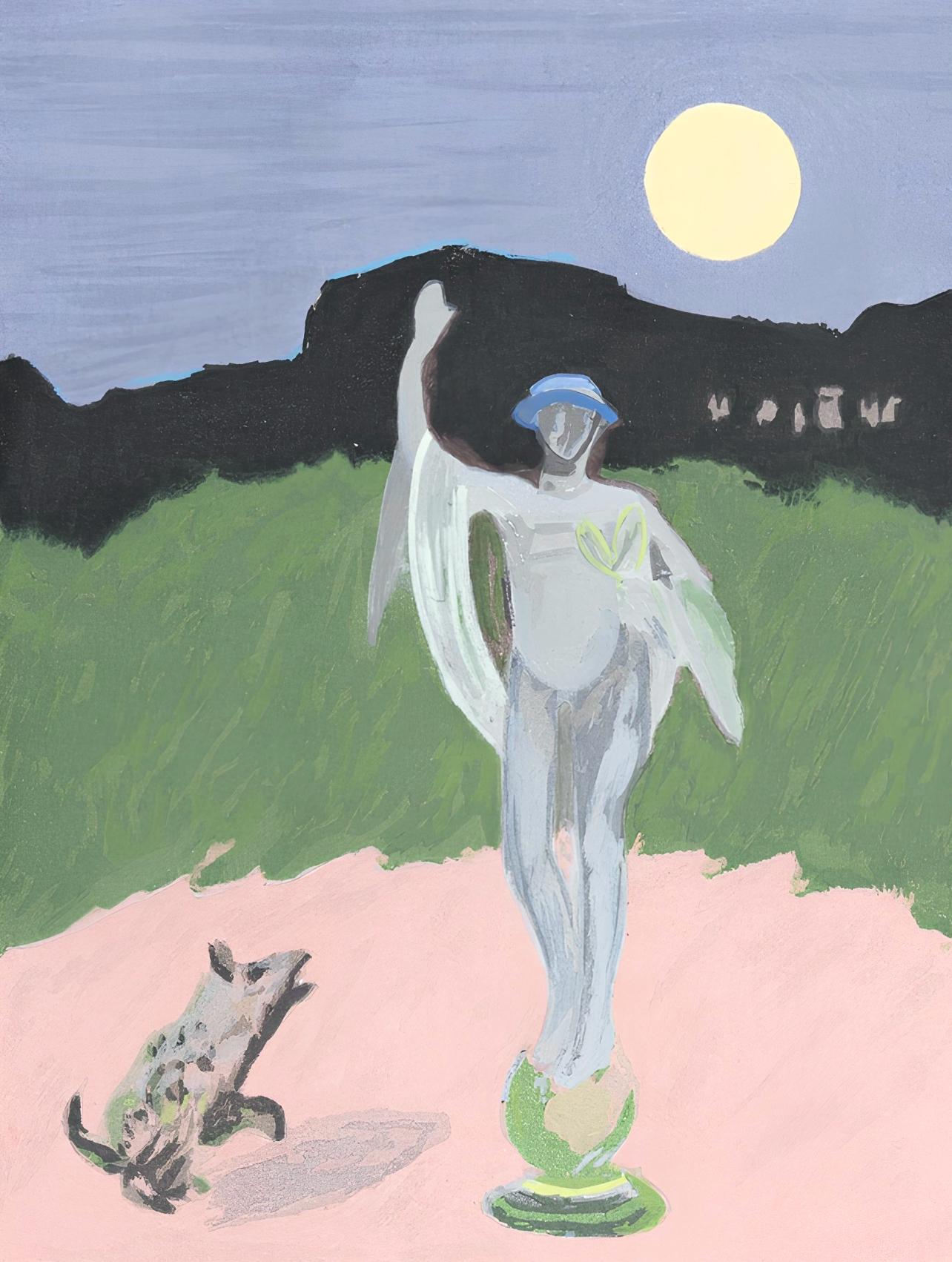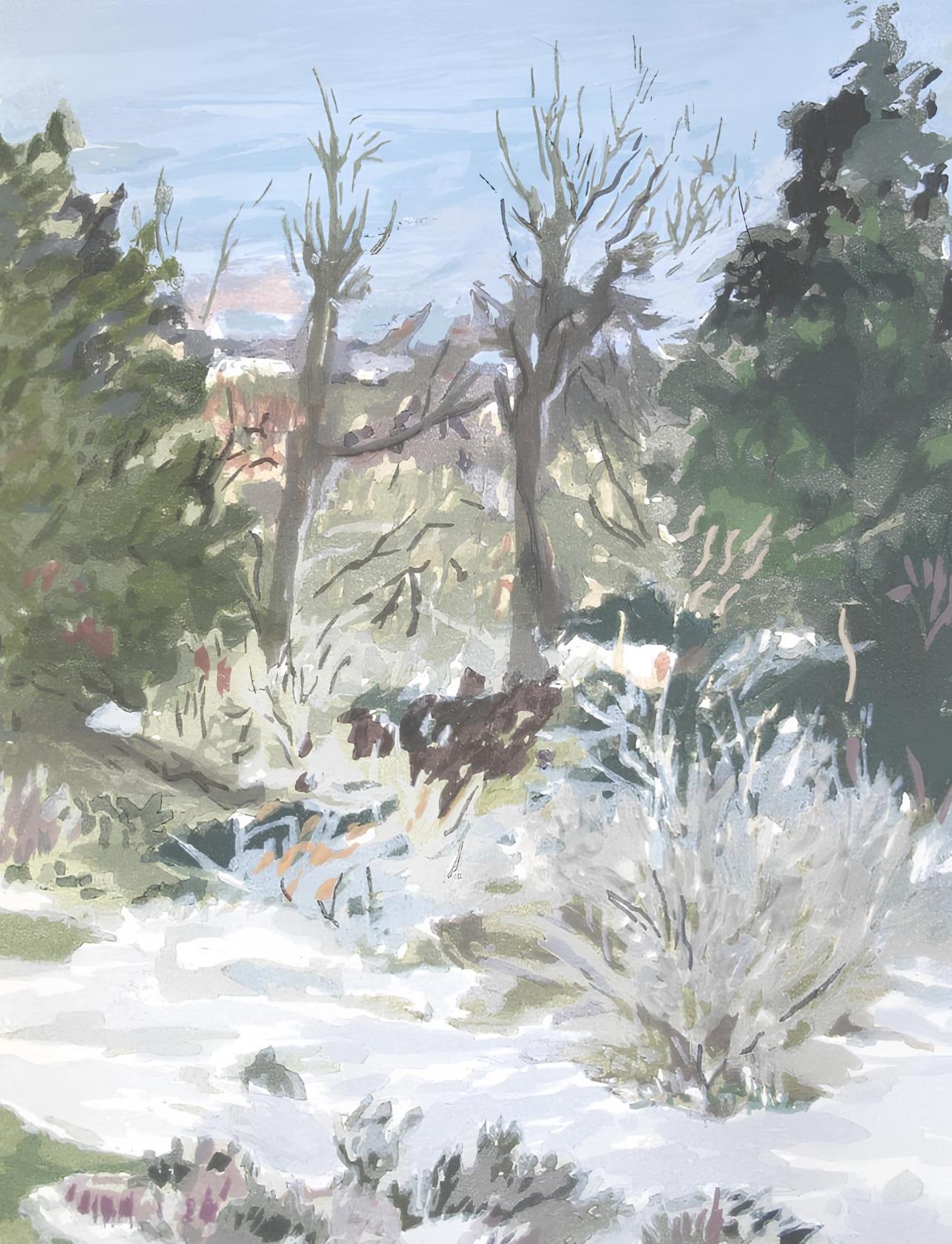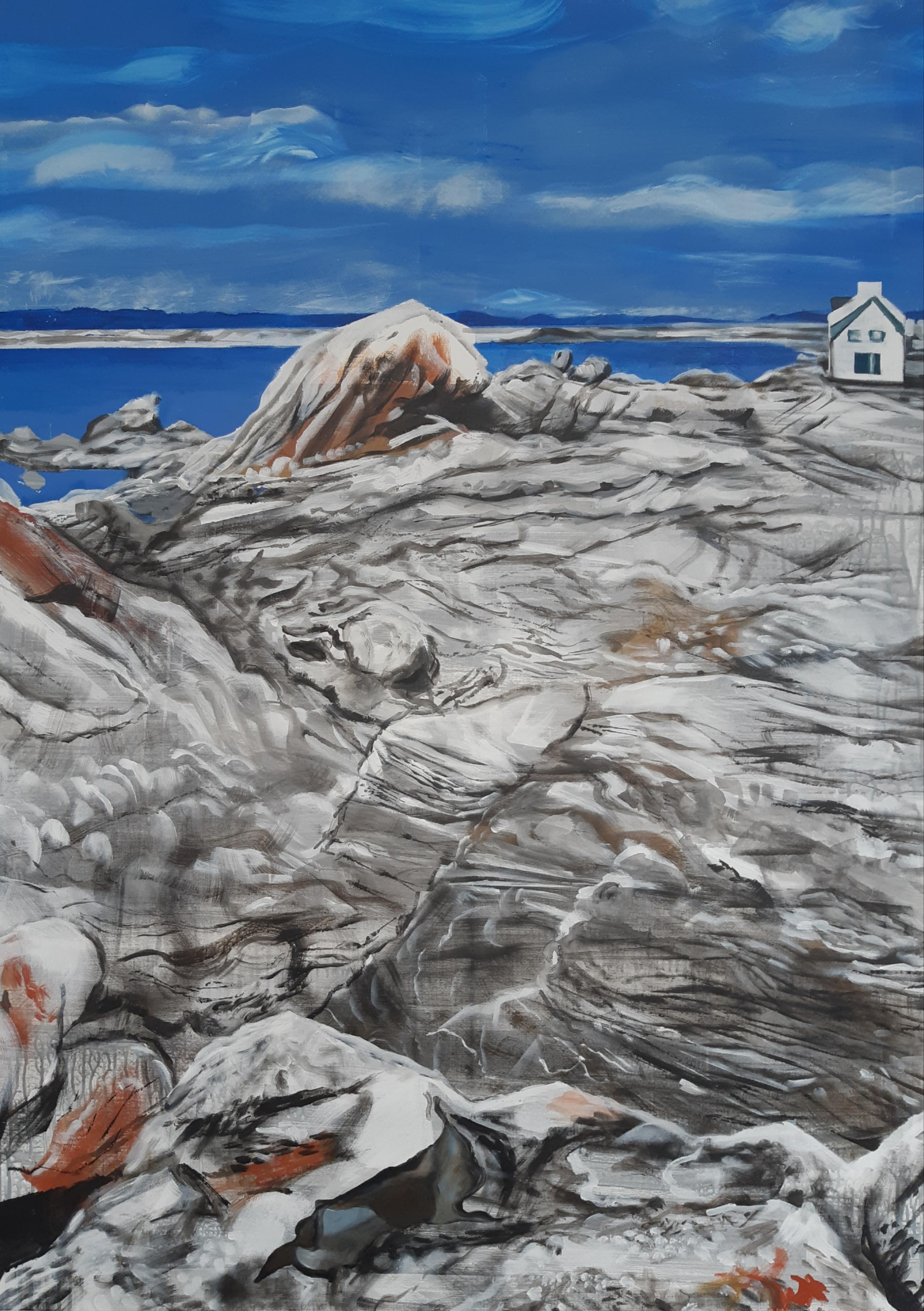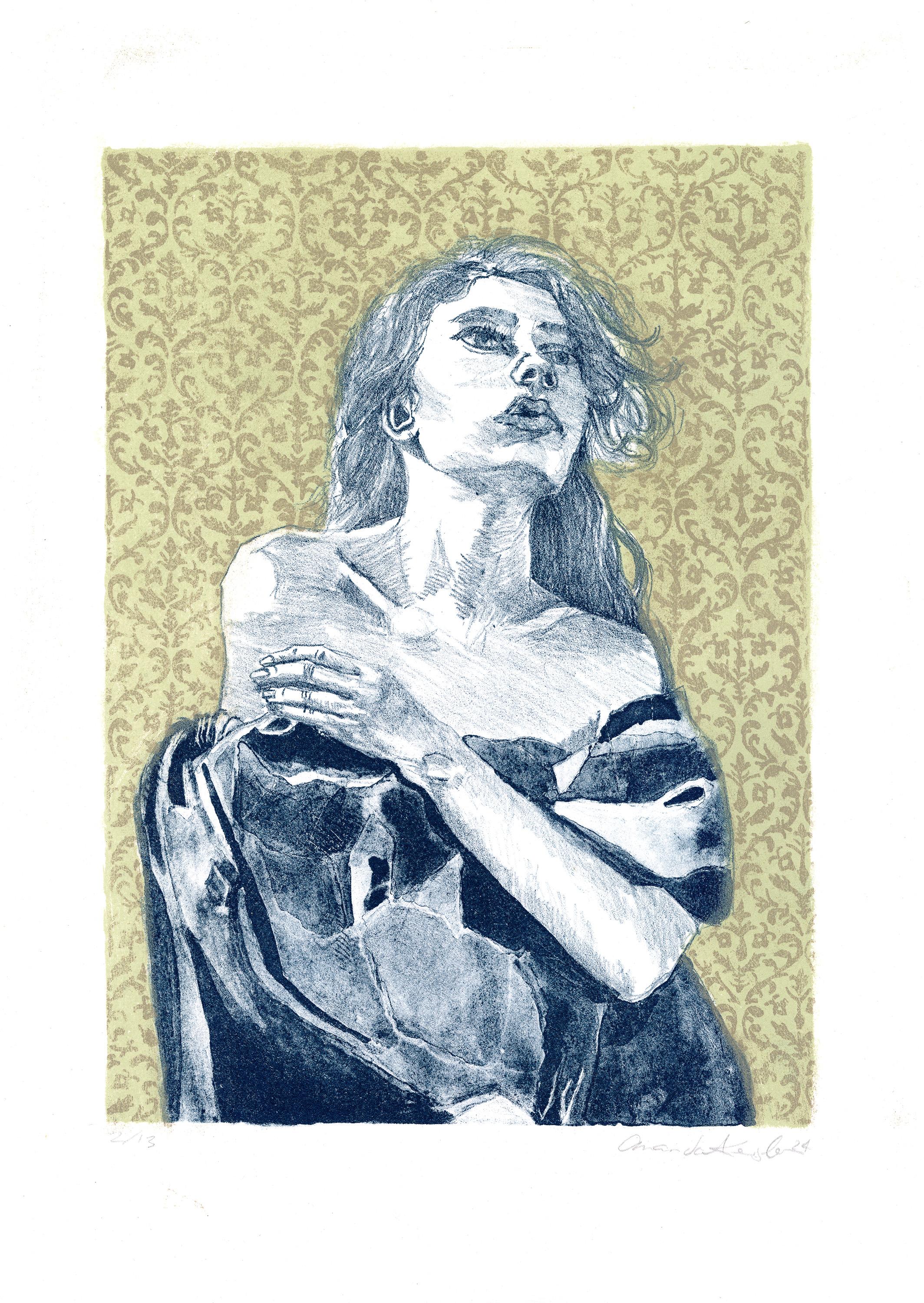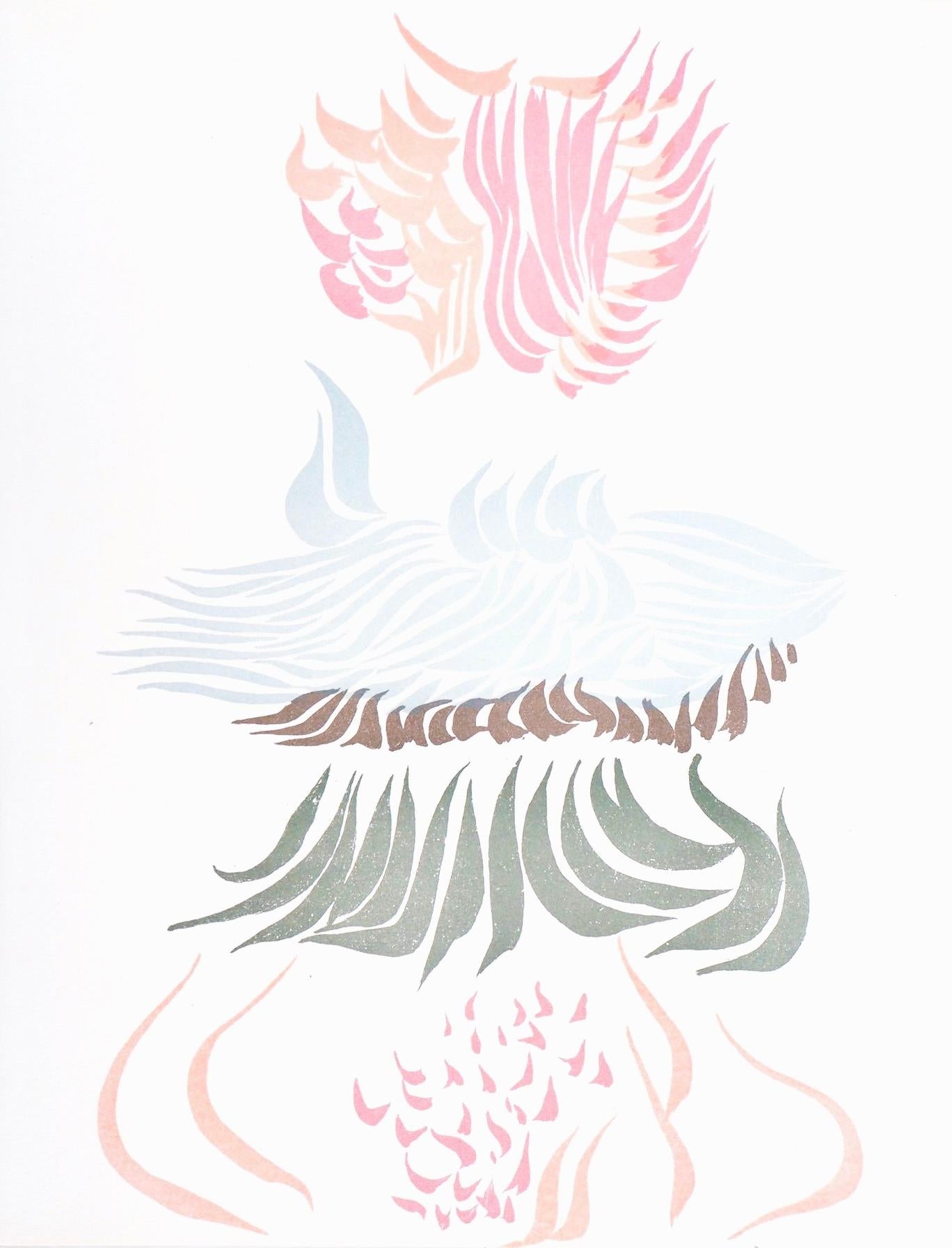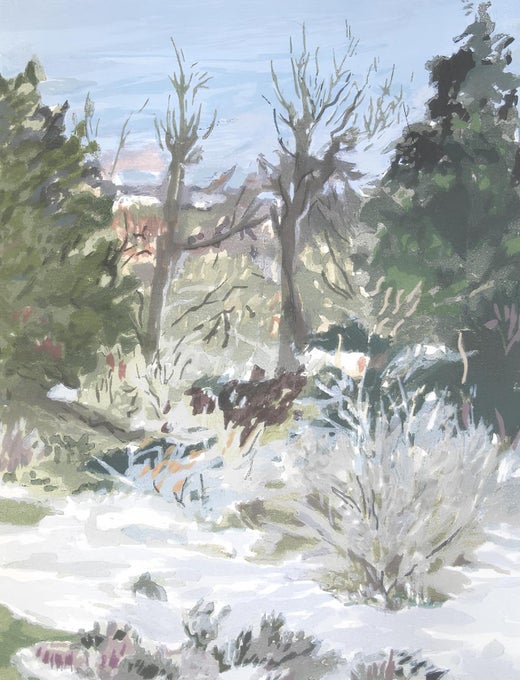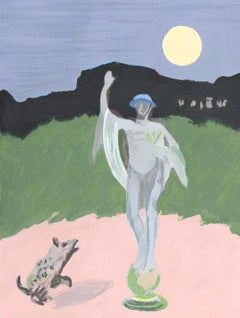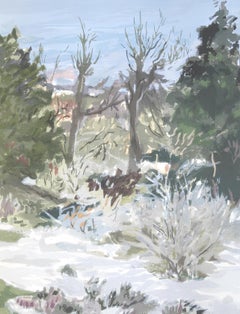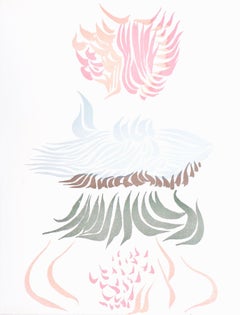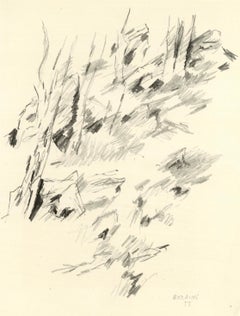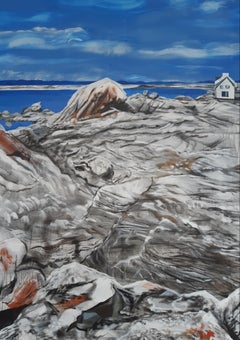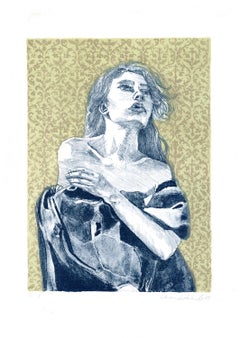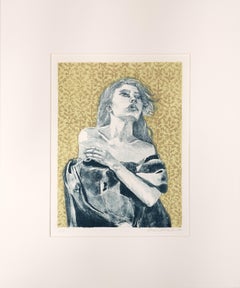Items Similar to Composition, Description of a Masque, Jane Freilicher
Want more images or videos?
Request additional images or videos from the seller
1 of 9
Jane FreilicherComposition, Description of a Masque, Jane Freilicher1998
1998
$1,436
$1,79520% Off
£1,106.13
£1,382.6620% Off
€1,263.07
€1,578.8320% Off
CA$2,048.48
CA$2,560.6120% Off
A$2,240.66
A$2,800.8220% Off
CHF 1,175.84
CHF 1,469.8020% Off
MX$26,797.05
MX$33,496.3220% Off
NOK 14,839.08
NOK 18,548.8520% Off
SEK 13,843.07
SEK 17,303.8420% Off
DKK 9,432.80
DKK 11,79120% Off
About the Item
Woodcut on vélin Tosa Hanga à la main paper. Paper Size: 16 x 12 inches. Inscription: Unsigned and unnumbered, as issued. Notes: From the album, Description of a Masque, 1998. Published by The Limited Editions Club, New York; printed by Keiji Shinohara, Portland, 1998. Excerpted from the folio, This album was designed, set and printed by Dan Carr and Julia Ferrari at Golgonooza Letter Foundry & Press in Jannon-Garamond with Weiss titling, in an edition of CCC. The paper was handmade for this edition at the H. M. P. mill. The illustrations by Jane Freilicher were printed by Keiji Shinohara on handmade Tosa Hanga paper.
JANE FREILICHER (1924-2014) was an American representational painter of urban and country scenes from her homes in lower Manhattan and Water Mill, Long Island. She was a member of the informal New York School beginning in the 1950s, and a muse to several of its poets and writers. Freilicher was at the center of a milieu of important New York painters and poets, including painters Helen Frankenthaler, Joan Mitchell, Grace Hartigan, Fairfield Porter, Larry Rivers, and poets of the New York School including John Ashbery, Kenneth Koch, Frank O'Hara and James Schuyler. Along with Frankenthaler, Hartigan, Mitchell, and Nell Blaine, she was among only a handful of women artists who were exhibiting alongside their male counterparts. In 1996 she was awarded the Annual Academy of the Arts Lifetime Achievement Award from the Guild Hall Museum in East Hampton, New York.
- Creator:Jane Freilicher (1924, American)
- Creation Year:1998
- Dimensions:Height: 16 in (40.64 cm)Width: 12 in (30.48 cm)
- Medium:
- Movement & Style:
- Period:
- Condition:
- Gallery Location:Southampton, NY
- Reference Number:1stDibs: LU1465216135622
Jane Freilicher
Jane Freilicher (1924–2014) was an influential American painter known for her lyrical landscapes, still lifes, and interior scenes. Associated with the New York School, she maintained close ties with leading poets and painters of her time, including Frank O’Hara, John Ashbery, and Willem de Kooning. Freilicher’s work balanced figurative tradition with modernist sensibilities, often depicting views from her Manhattan and Long Island studios in soft, atmospheric tones. Her paintings are celebrated for their quiet intimacy, painterly elegance, and subtle interplay between observation and abstraction.
About the Seller
4.9
Platinum Seller
Premium sellers with a 4.7+ rating and 24-hour response times
Established in 1978
1stDibs seller since 2021
1,228 sales on 1stDibs
Typical response time: <1 hour
- ShippingRetrieving quote...Shipping from: Southampton, NY
- Return Policy
More From This Seller
View AllComposition, Description of a Masque, Jane Freilicher
By Jane Freilicher
Located in Southampton, NY
Woodcut on vélin Tosa Hanga à la main paper. Paper Size: 16 x 12 inches. Inscription: Unsigned and unnumbered, as issued. Notes: From the album, Description of a Masque, 1998. Publis...
Category
1990s Academic Figurative Prints
Materials
Woodcut
$1,436 Sale Price
20% Off
Free Shipping
Composition, Description of a Masque, Jane Freilicher
By Jane Freilicher
Located in Southampton, NY
Woodcut on vélin Tosa Hanga à la main paper. Paper Size: 16 x 12 inches. Inscription: Unsigned and unnumbered, as issued. Notes: From the album, Description of a Masque, 1998. Publis...
Category
1990s Academic Landscape Prints
Materials
Woodcut
$1,436 Sale Price
20% Off
Free Shipping
Jacques Herold, Surrealist Composition, from XXe siecle, 1974
Located in Southampton, NY
This exquisite lithograph by Jacques Herold (1910–1987), titled Composition surrealiste (Surrealist Composition), from the album XXe siecle, Nouvelle serie, XXXVIe Annee, No. 42, ori...
Category
1970s Modern Abstract Prints
Materials
Lithograph
$716 Sale Price
20% Off
Free Shipping
Jean Bazaine, Landscape, from XXe Siecle, 1958
By Jean Bazaine
Located in Southampton, NY
This exquisite lithograph and pochoir by Jean Bazaine (1904–2001), titled Paysage (Landscape), from the album XXe Siecle, Nouvelle serie N°11 (double), Noel 1958, originates from the...
Category
1950s Modern Abstract Prints
Materials
Lithograph
Enrico Baj, General, from XXe siecle, 1962
By Enrico Baj
Located in Southampton, NY
This exquisite lithograph with collaged textures simulating fabric and woodgrain by Enrico Baj (1924–2003), titled Generale (General), from the album XXe Siecle, Nouvelle serie, XXIV...
Category
1960s Modern Abstract Prints
Materials
Lithograph
Maria Helena Vieira da Silva, Untitled, from XXe Siecle, 1956
By Maria Helena Vieira da Silva
Located in Southampton, NY
This exquisite lithograph and pochoir by Maria Helena Vieira da Silva (1908–1992), titled Sans titre (Untitled), from the album XXe Siecle, Nouvelle serie N°7 (double) Juin 1956, ori...
Category
1950s Modern Abstract Prints
Materials
Lithograph
$796 Sale Price
20% Off
Free Shipping
You May Also Like
French Contemporary Art by Juliette Lamarca - Le Goût du Sel
Located in Paris, IDF
Acrylic on canvas
Juliette Lamarca is a French artist born in 1982 who lives and works in Clamart, near Paris, France. After higher studies in applied arts, for ten years she create...
Category
2010s Figurative Paintings
Materials
Canvas, Acrylic
Untitled
By Ananda Kesler
Located in Milwaukee, WI
Edition 2/13
Signed to lower right
Ananda Kesler was born in Haifa, Israel. In 2002 she received her BA in Fine Art from the University of Iowa. She has continued her art education ...
Category
21st Century and Contemporary Contemporary Figurative Prints
Materials
Lithograph
Untitled
By Ananda Kesler
Located in Milwaukee, WI
Edition 1/13
Signed to lower right
Ananda Kesler was born in Haifa, Israel. In 2002 she received her BA in Fine Art from the University of Iowa. She has continued her art education...
Category
21st Century and Contemporary Contemporary Figurative Prints
Materials
Lithograph
French Contemporary Art by Claudine Loquen - Clotilde Reine des Francs
Located in Paris, IDF
Claudine Loquen is a French artist born in 1965 who lives and works in Sassetot-le-Mauconduit, France.
Like Colette with the literature, the artist makes the apology of painting wi...
Category
2010s Contemporary Figurative Prints
Materials
Handmade Paper, Etching
Frank Kleinholz, World Premier
By Frank Kleinholz
Located in New York, NY
Frank Kleinholz was a lawyer-turned-modernist-artist. This work may have been printed in France in the late 1940s when he went there to learn lithography. He returned to the states i...
Category
Mid-20th Century American Modern Figurative Prints
Materials
Lithograph
"And Lovely, Learn by Going Where to Go" - Contemporary surreal acrylic painting
Located in Nyack, NY
Lotte Petricone's paintings blend representational and abstract imagery. The interplay of color, value, and texture creates a sense of space and movement throughout the image, while ...
Category
2010s Surrealist Landscape Paintings
Materials
Acrylic, Wood Panel
